THE WORLD'S LARGEST SAND ISLAND!
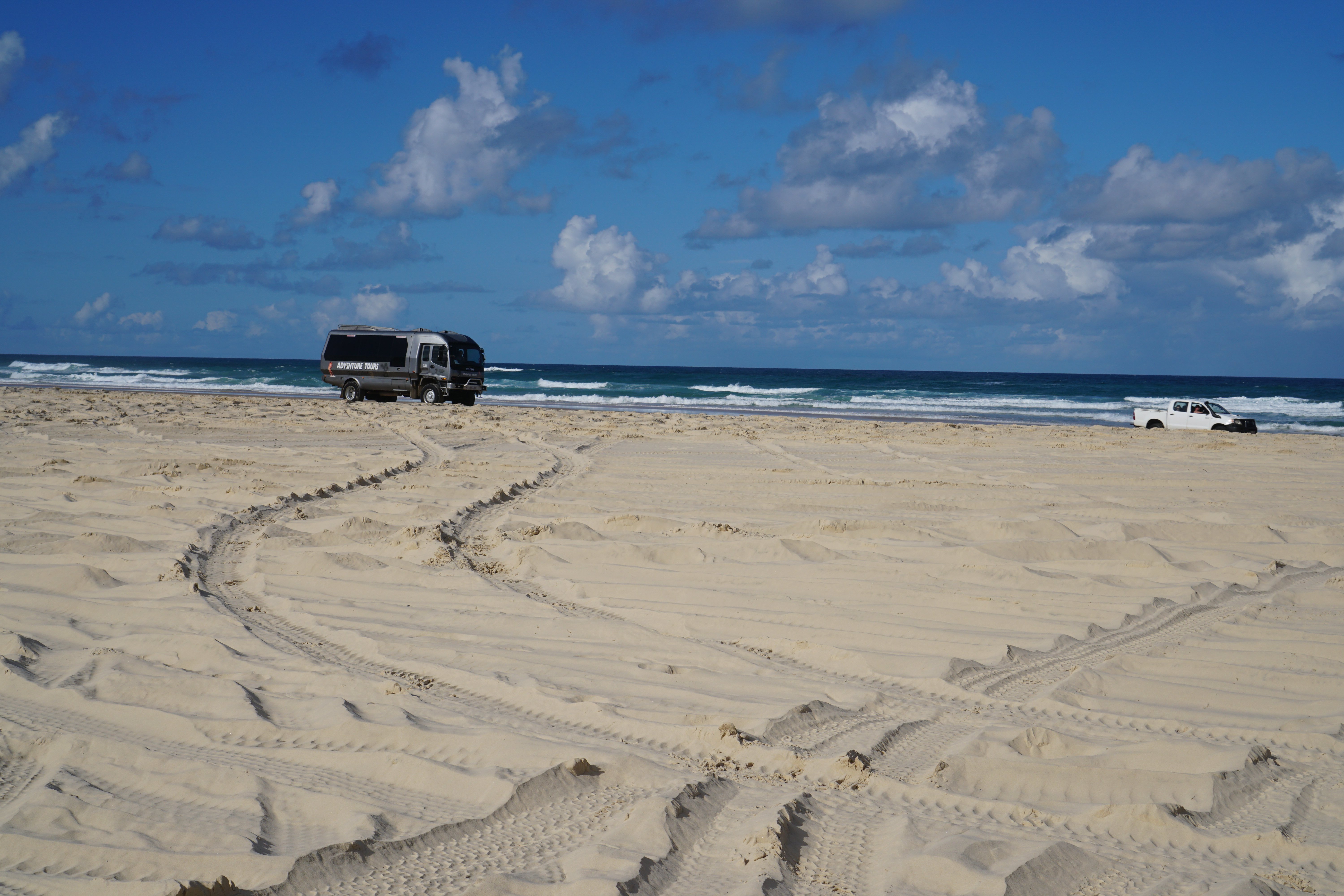
Check out all the amazing things to see and do on Fraser Island, Queensland, Australia. I've just returned from 3 incredible days on this wonder, with a camera full of photos and a head full of memories. I've decided to document my trip here and it is going to be large so I've split it into 3. Having traveled to every continent (except Antarctica) on our amazing planet, I can say that Fraser Island is truly a unique gem. From its crystal clear freshwater lakes, roaming dingoes and 4wd's using the beach as a motorway, it really is an island paradise. Today I post the 1st day, with a fun video at the end of driving on Fraser. I hope you find this post useful and enjoyable.
If you have been, I would love to hear your experience, or if you are wishing to go I will be willing to answer any questions you may have. Enjoy Part 1 of my Fraser Adventure.
LOCATION:
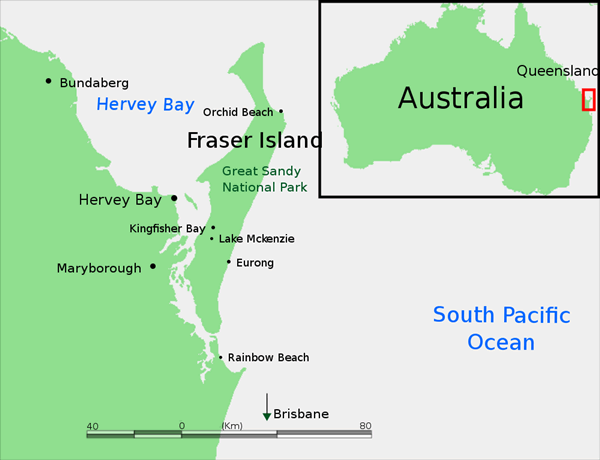
Fraser Island is a World heritage-listed island located on the south-coast of Queensland, Australia. It is approximately 220 kilometres north of Brisbane. Fraser Island is about 120 kilometres long and approximately 24 kilometres across. It is considered to be the largest sand island in the world at 1,840 km2, and is also the largest island in the state of Queensland, and Australia's sixth largest island.
The island has a variety of vegetation which is quite unique: rainforests, eucalyptus woodland, mangrove forests, wallum and peat swamps, sand dunes and coastal heaths. It is made up of sand that has been accumulating for 750,000 years on volcanic bedrock that provides a natural catchment for the sediment which is carried on a strong offshore current northwards along the coast. Unlike most sand dunes, plant life is abundant on Fraser Island due to a naturally occurring fungi which is present in the sand and releases nutrients in a form that can be absorbed by plants.
Fraser Island is also home to a few mammal species,as well as a diverse range of birds, reptiles and amphibians, including the occasional saltwater crocodile. The most prominent animal on the island is the dingo, a native dog to Australia. All wildlife on the island is protected as part of the Great Sandy National Park. There are about 200 full-time residents on the island, although thousands of tourists visit each year.
HOW TO GET THERE:
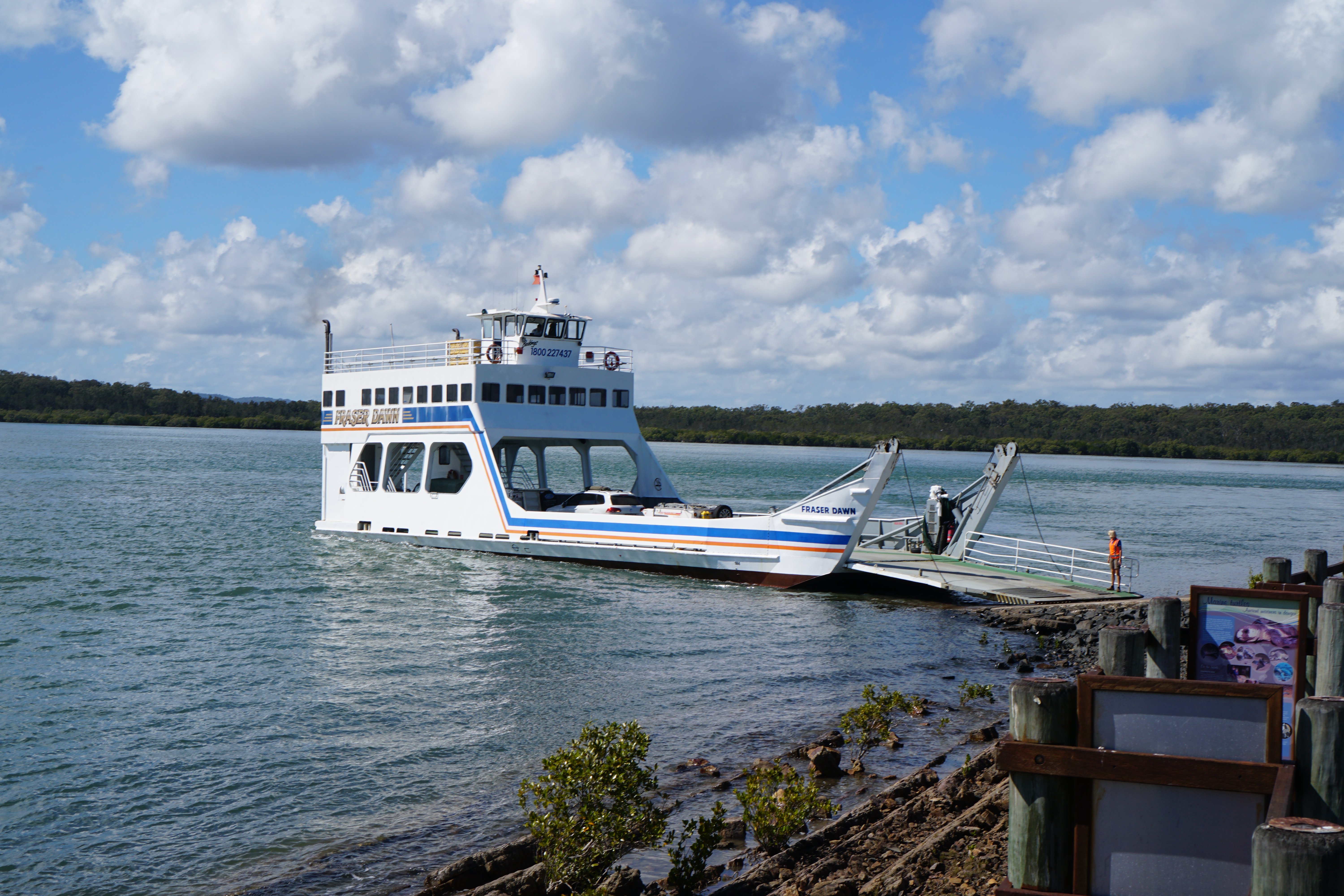
THE "FRASER DAWN" VEHICULAR FERRY.
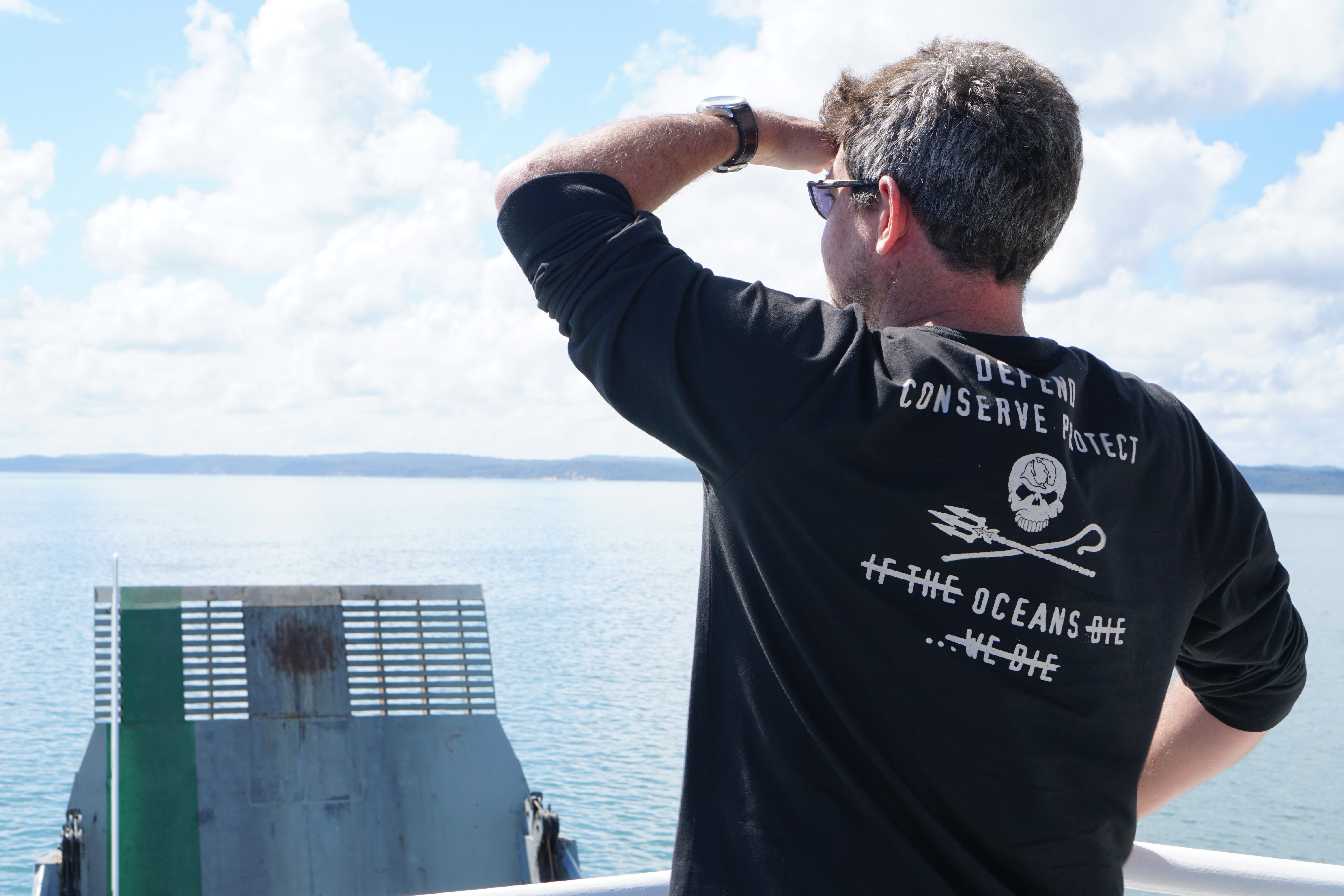
LOOKING FOR FRASER IN THE DISTANCE.
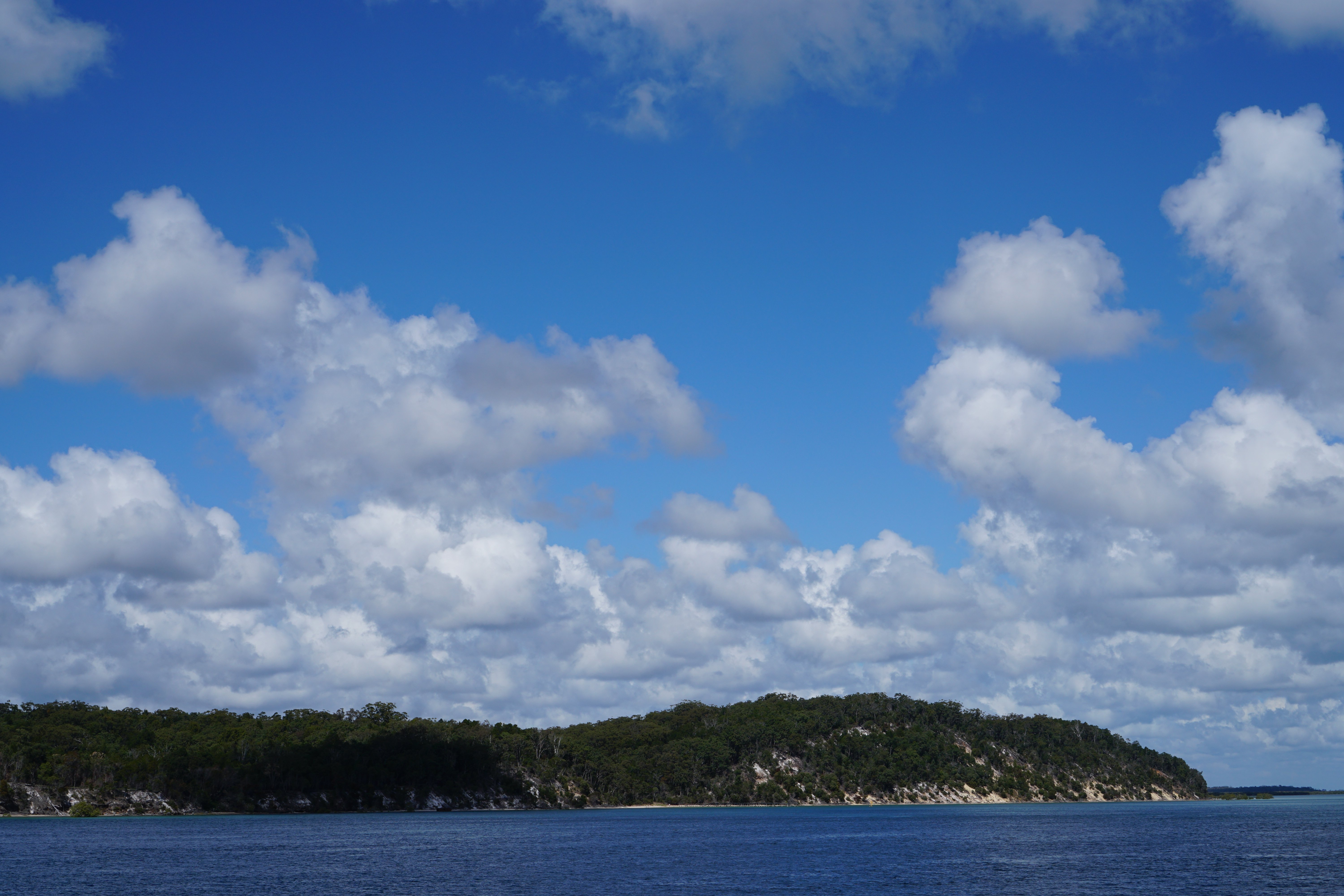
FRASER ISLAND.
The island is not bridged and the only access is by vehicular barge from either Rainbow Beach or River Heads. We took the barge from River Heads which is located 18 kilometres south of the city of Hervey Bay. The town is built on a narrow peninsula surrounded by the Great Sandy Strait (to the east), the mouth of the Mary River (south) and the mouth of the Susan River (a tributary of the Mary) to the west. The vehicular ferries from here, link the mainland with Wanggoolba Creek and Kingfisher Bay Resort. The journey to Fraser Island takes about 45 minutes.
THE INLAND TRACKS:
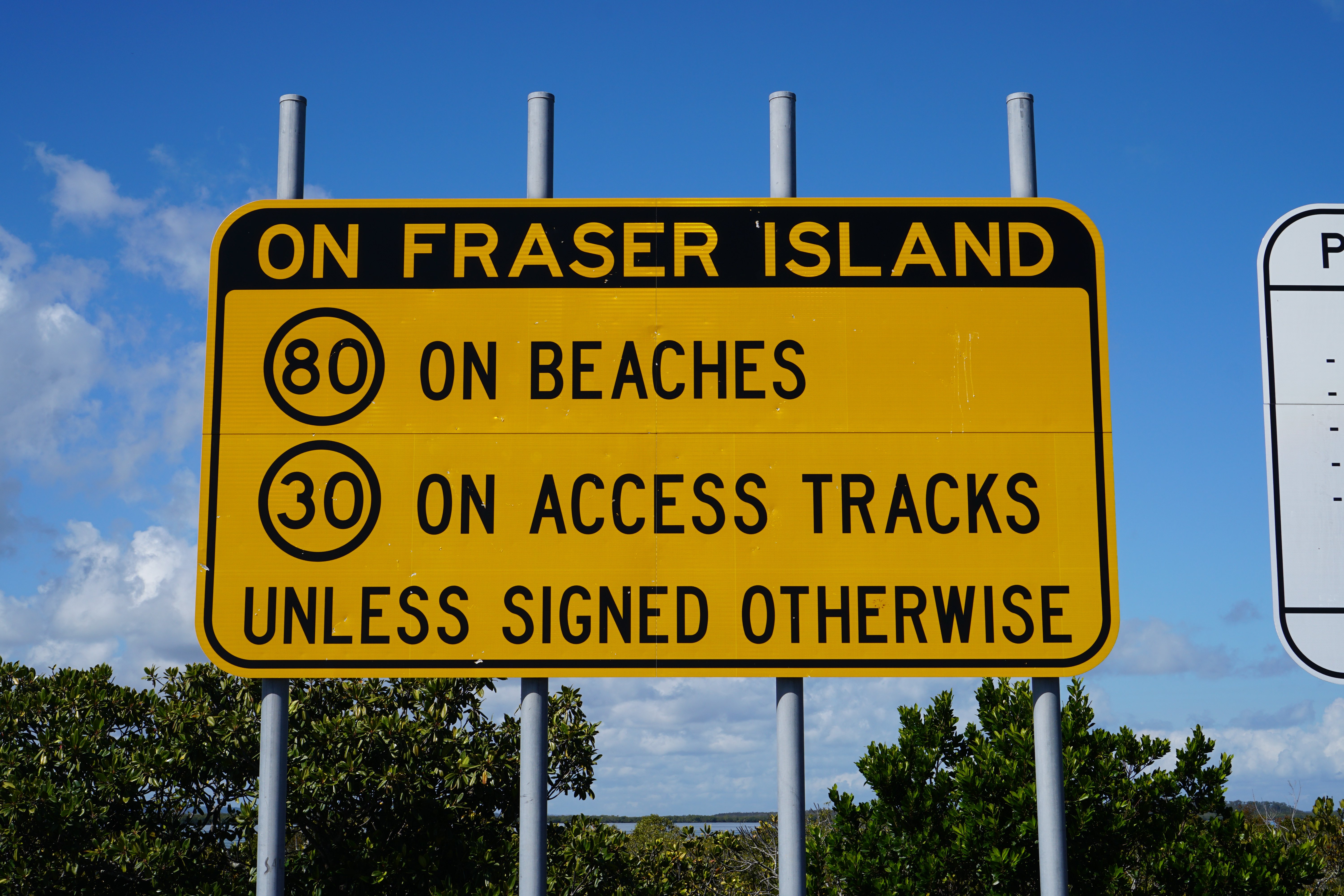
SPEED SIGNS.
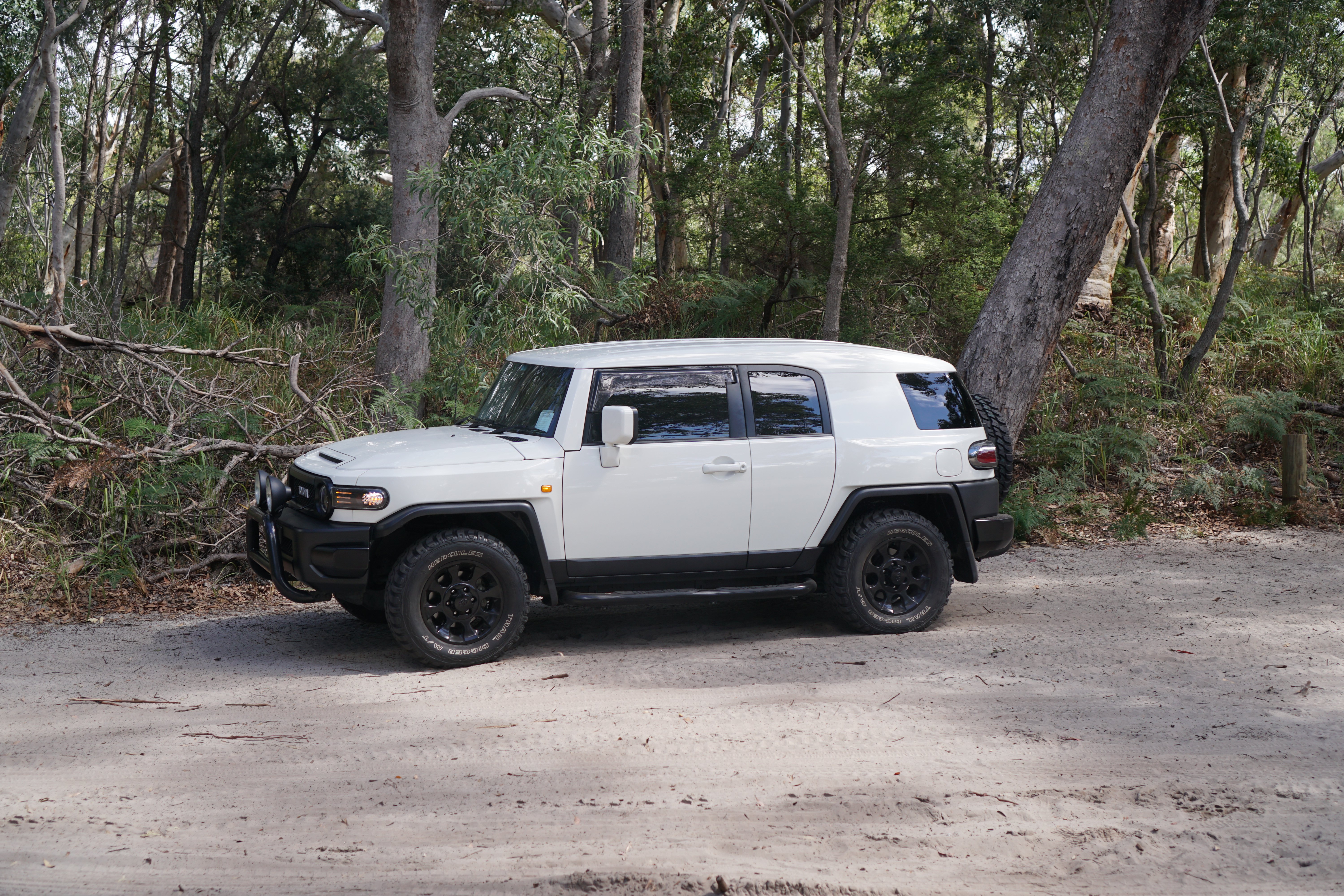
THE TOYOTA FJ SERIES WE DROVE.
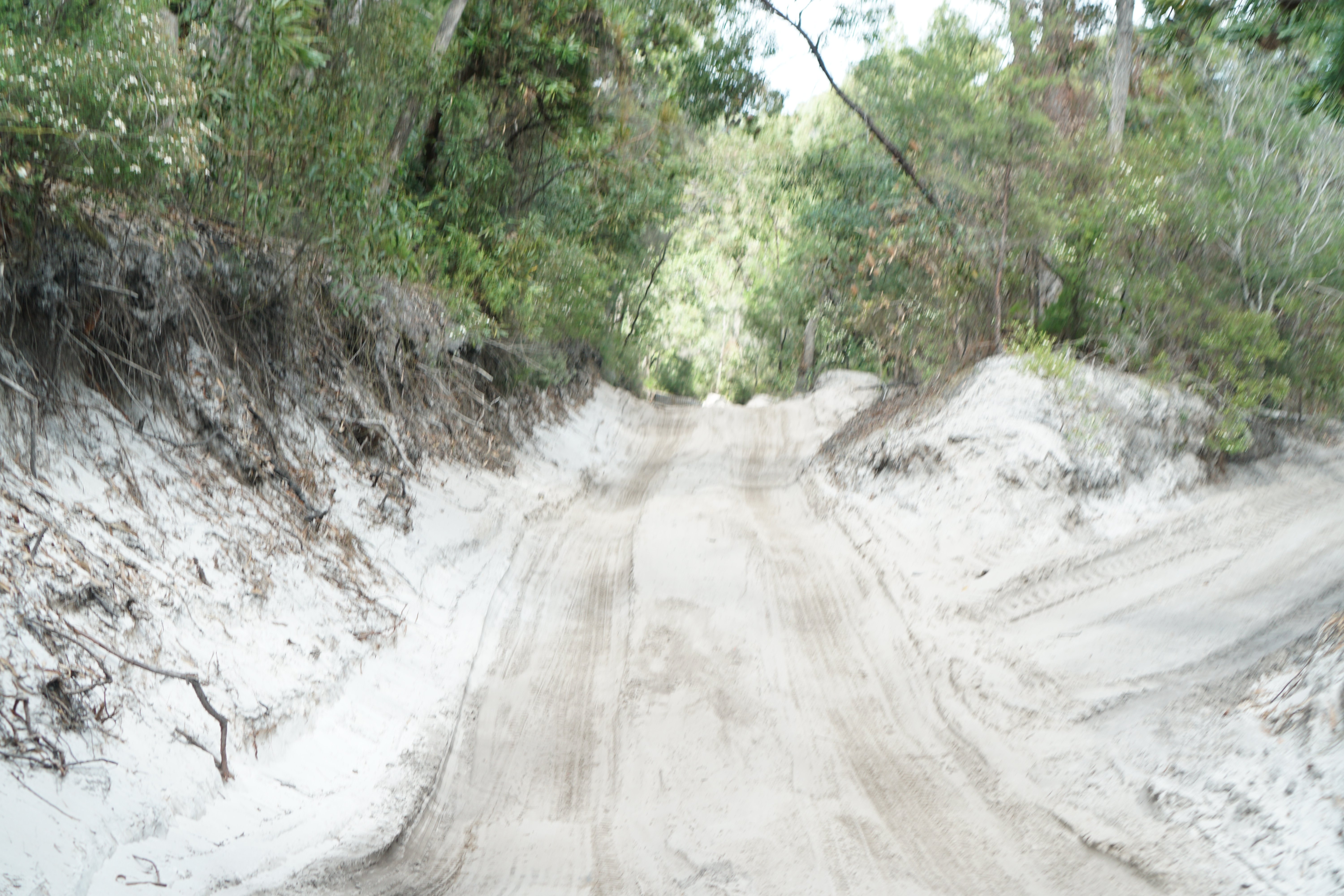
SOFT SAND AND STEEP DESCENT.
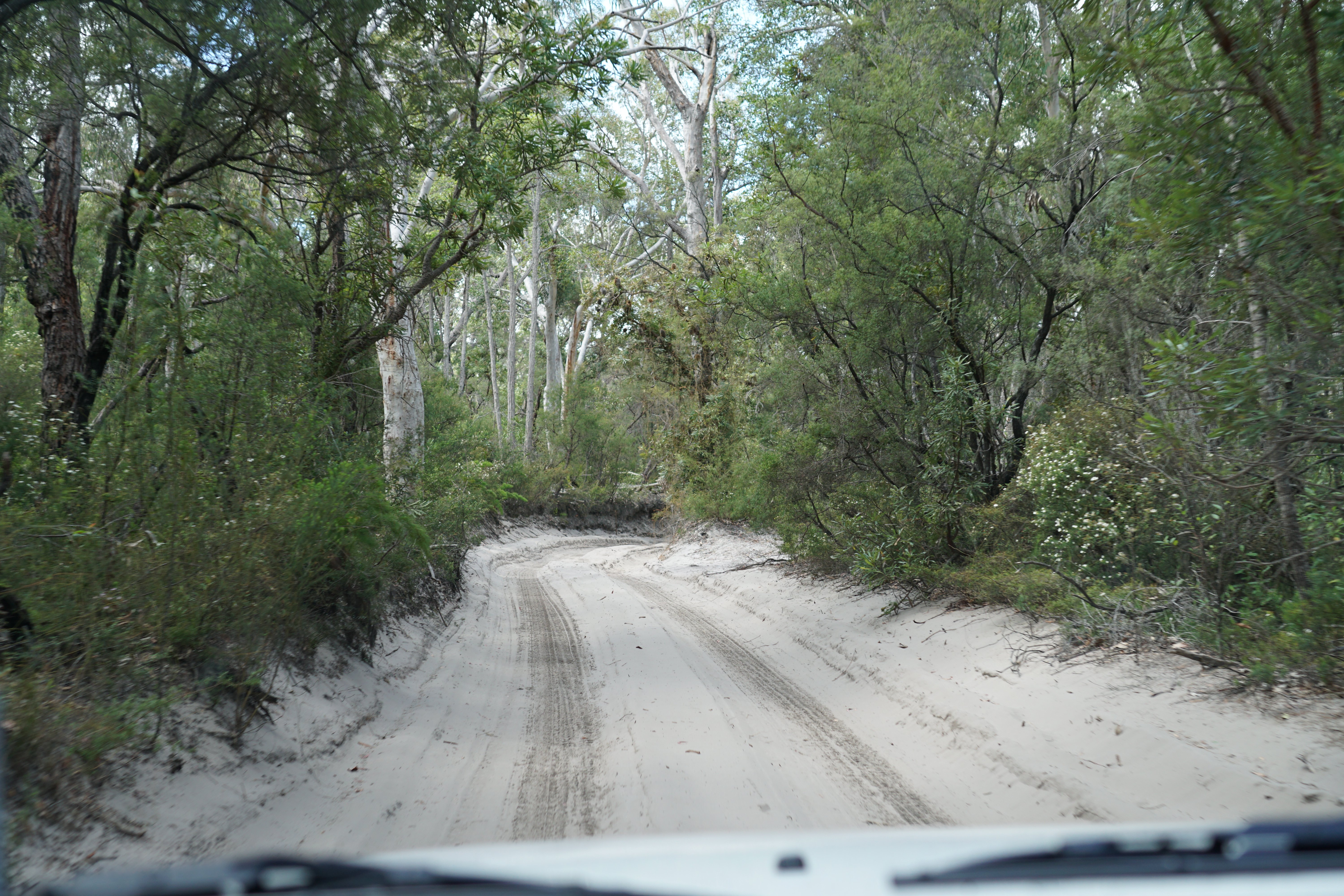
HARDER SAND IN THE FOREST.
Although there are a few sealed roads at the resort of Kingfisher Bay, all other parts of the island require a 4WD vehicle and a moderate amount of knowledge of off-raod driving. While most tracks are easily navigatable by novice drivers, the access to and from the beach is usually through soft and chopped up sand, and its easy to get bogged if you don't know what you are doing. Most driving takes place along 75 mile beach on the Eastern side of the island, however there is a 20 kilometre drive through the centre of the island to get there.
ACCOMMODATION:
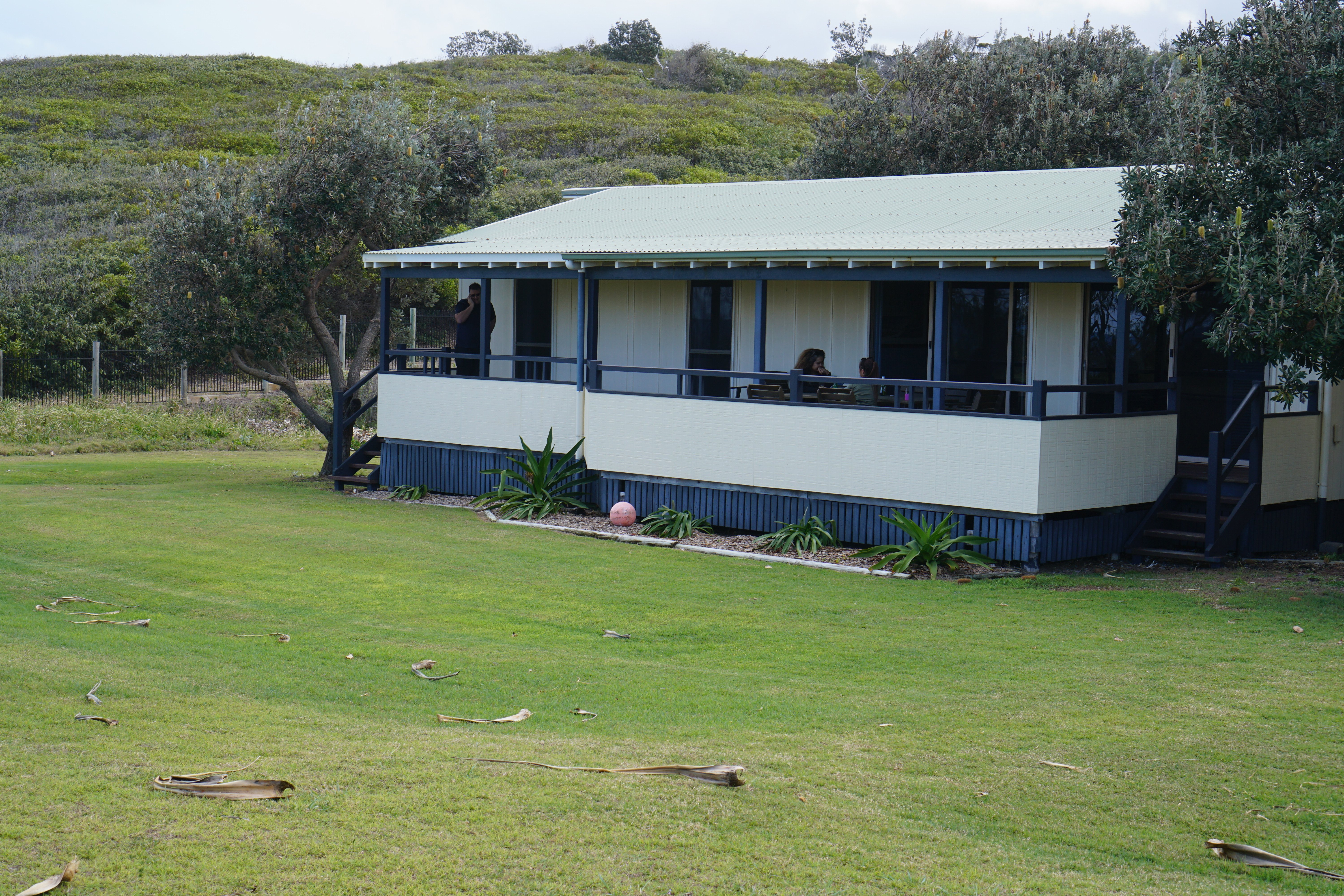
OUR 3 BEDROOM BEACH BUNGALOW.
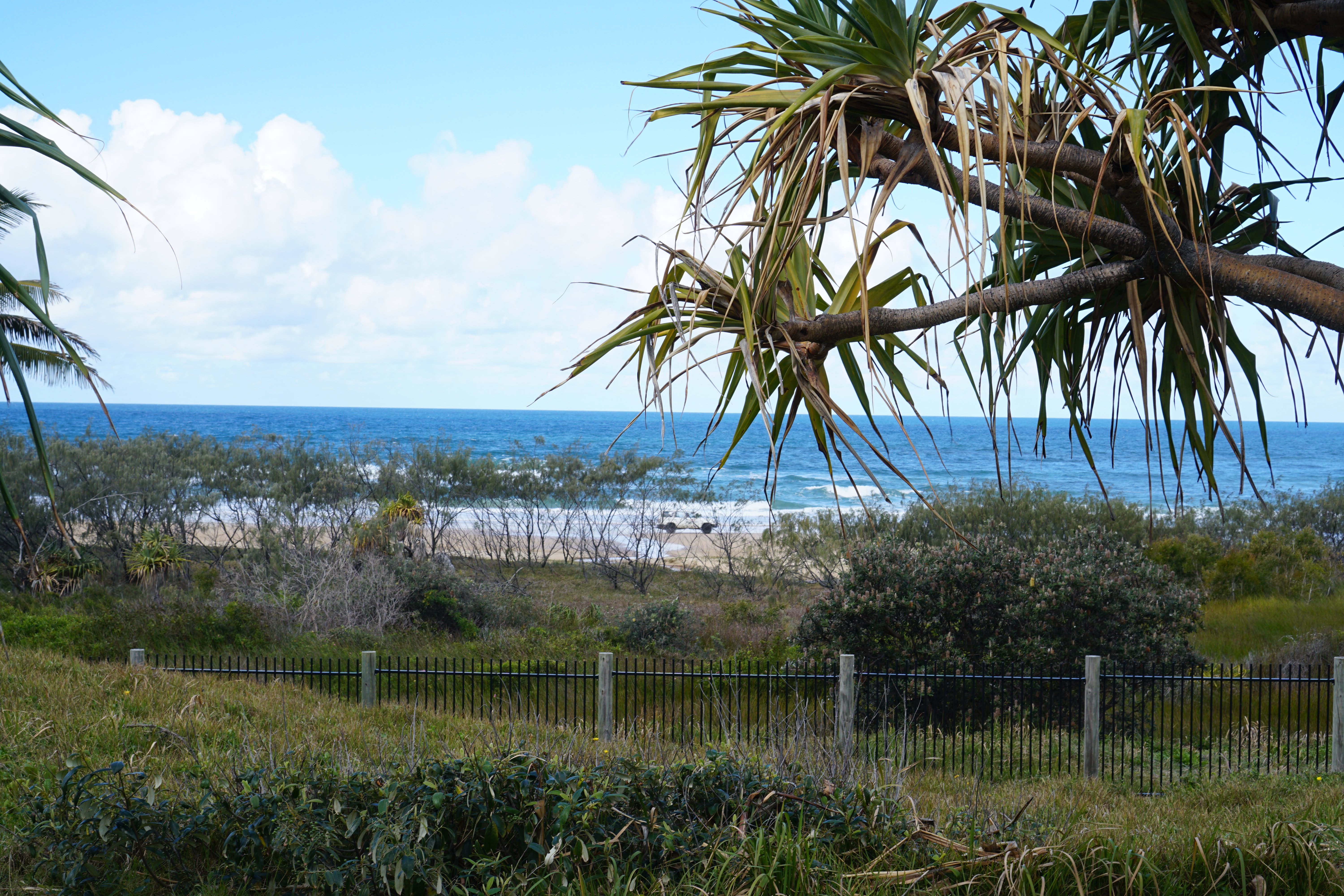
OUR AMAZING VIEW.
We stayed at Fraser Island Beach Houses which are located at the township of Eurong on the Eastern side of the island. Apart from Kingfisher Bay Eco-Resort, most accommodation is located on the beach-side of the island. We had a beachfront 3 bedroom cottage with million dollars views over the beach and Pacific Ocean. Eurong is conveniently located about the mid-way point of the island on 75 mile beach, and makes travel easy to most of the popular tourist destinations.
THE MAHENO SHIPWRECK:
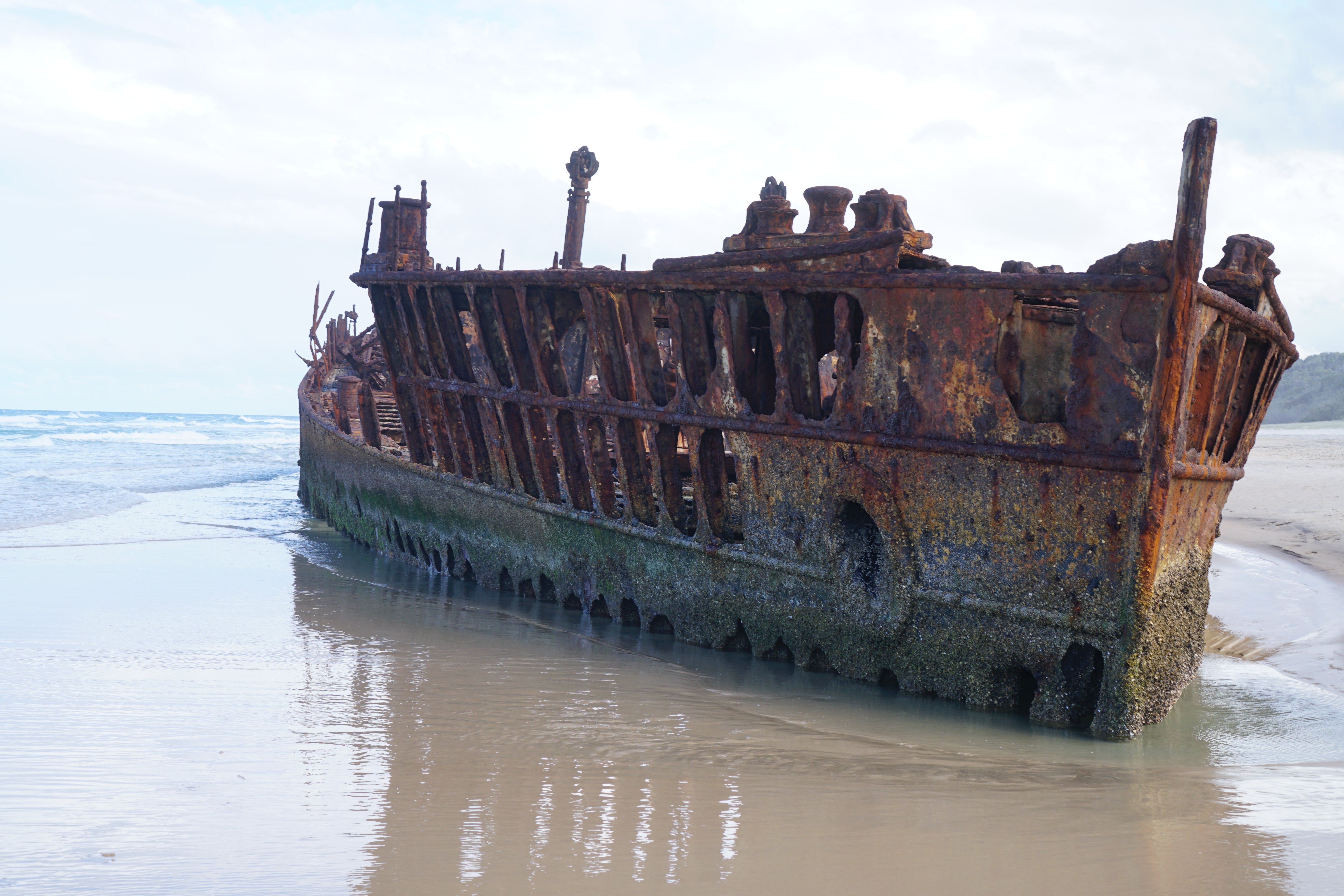
THE MAHENO WRECK.

PANORAMA OF THE WRECK (CLICK IT).
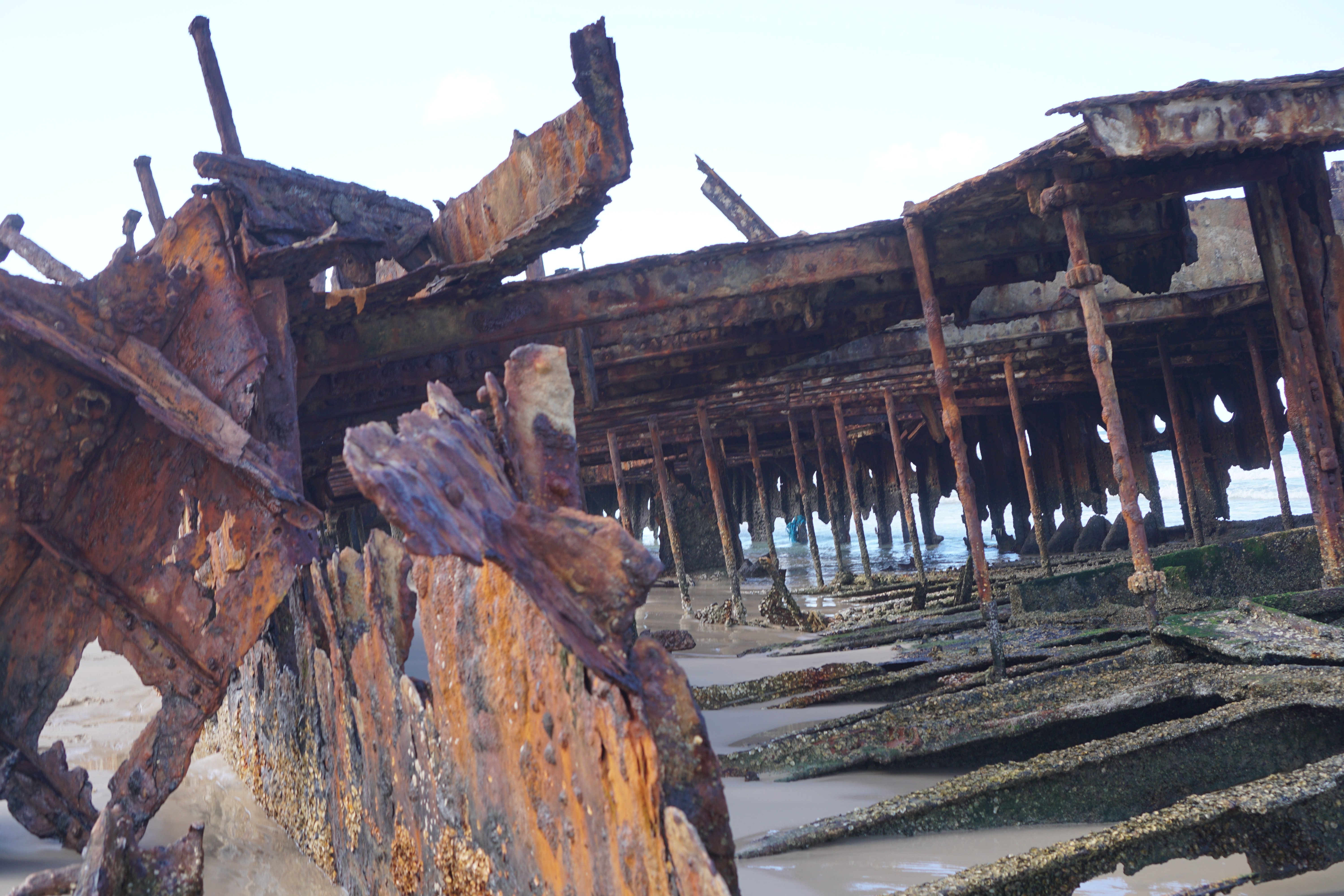
THE SKELETON OF A ONCE-GREAT SHIP.
A major landmark on Fraser Island is the shipwreck of the S.S. Maheno. The Maheno was built in Scotland in 1905 to be used as a luxury passenger ship for the trans-Tasman crossing. During the First World War she was commandeered and served as a medical ship in the English Channel. Following the war she was then returned to her owners to resume her usual commercial operation. By 1935 the ship had seen better days and was taken out of service and sold to a ship-breaker in Japan. On 25 June 1935, while being towed to Osaka to be scrapped, she was caught in a strong cyclone about 80 kilometres off the Queensland coast. The towline broke, and on 9 July 1935 the Maheno became beached on the east coast of Fraser Island. Too expensive and too difficult to attempt to salvage it, this is where it has lay ever since.
DINGOES:
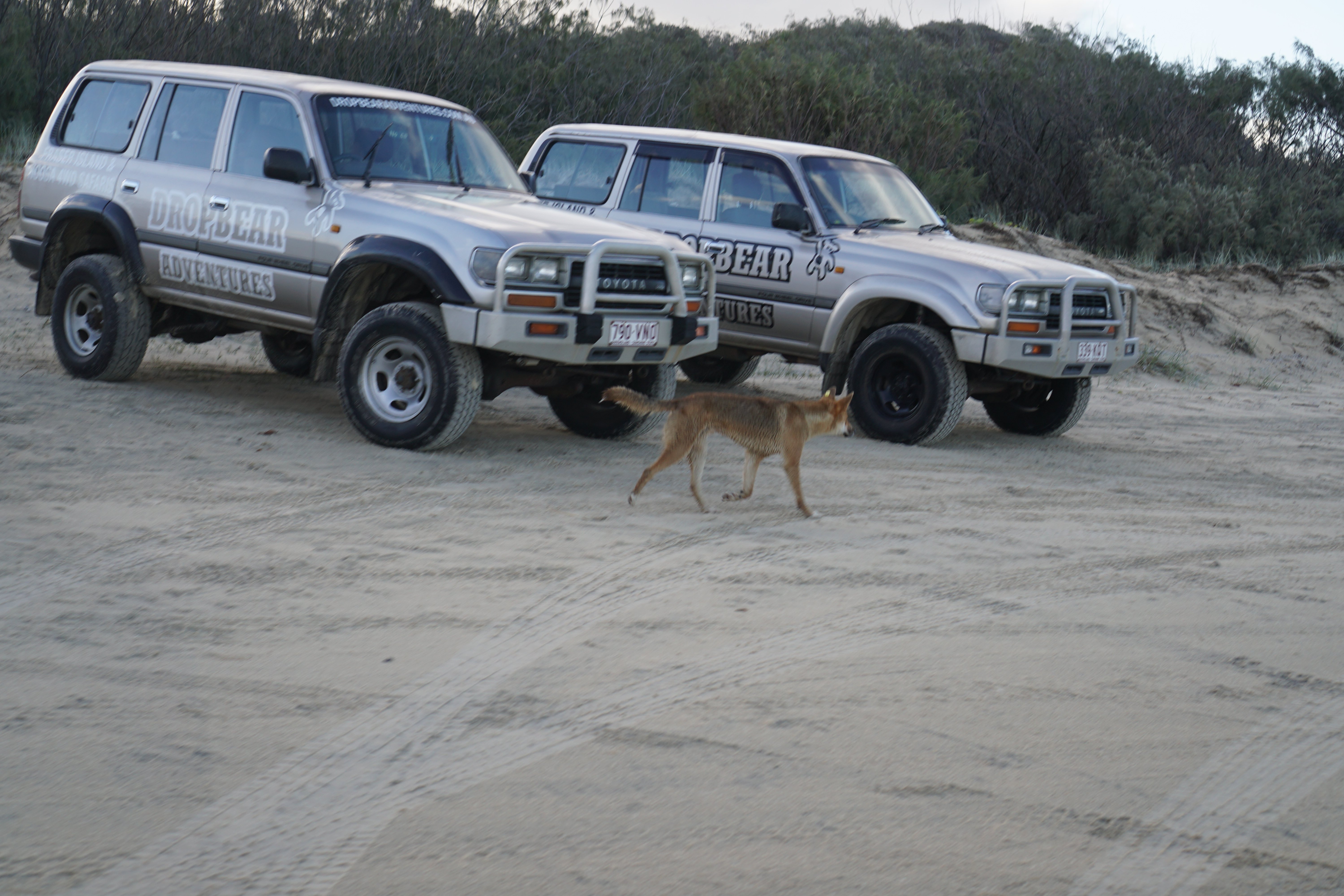
DINGOES OFTEN SCAVAGE AROUND VEHICLES FOR FOOD.
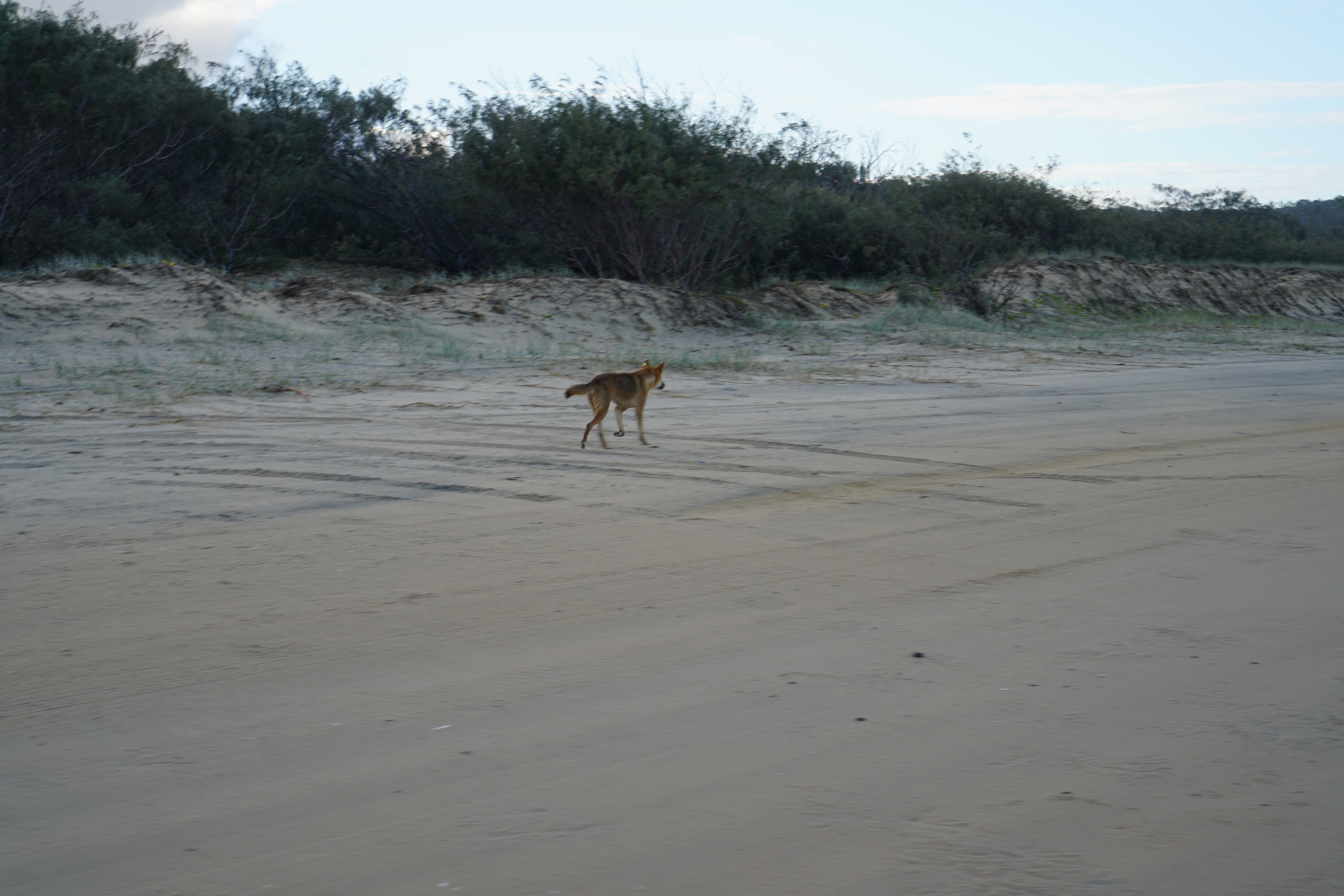
A LONE DINGO AT DUSK ON THE BEACH.
Dingoes were once common on the island, but are now decreasing. The Fraser Island dingoes are reputedly some of the last remaining pure dingoes in Eastern Australia and to prevent cross-breeding, dogs are not allowed on the island.
Up until 1995, there were no reports of dingo attacks on humans on Fraser Island. However, in April 2001, a young boy wandered away from his family and was attacked and killed by a small pack of dingoes.As a result much of the dingo population was culled by rangers and as of January 2008, the number of dingoes on the island was estimated to be 120 to 150, and sightings have become less common. Dingo-proof fences, consisting of metals bars across a concrete pit and a 1.8 m high mesh fence have now been built around the nine island settlements in 2008, to keep the dingoes out of the townships. Dingoes are often found wandering the beach at dusk in search of food, and appear not to be fearful of humans. Although the likelihood of a dingo attack is low, it is best to be careful when in their presence.
ELI CREEK:
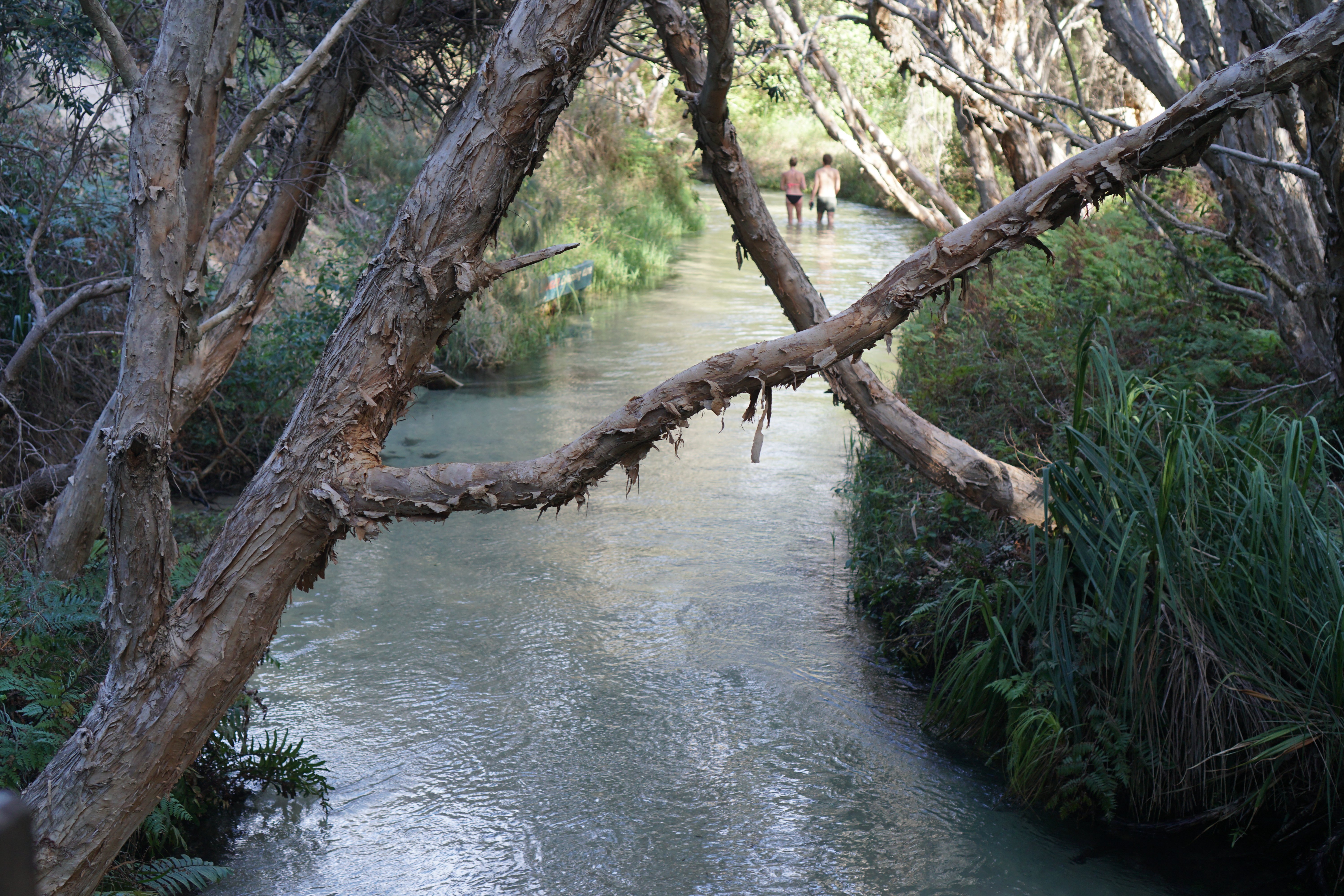
ELI CREEK.
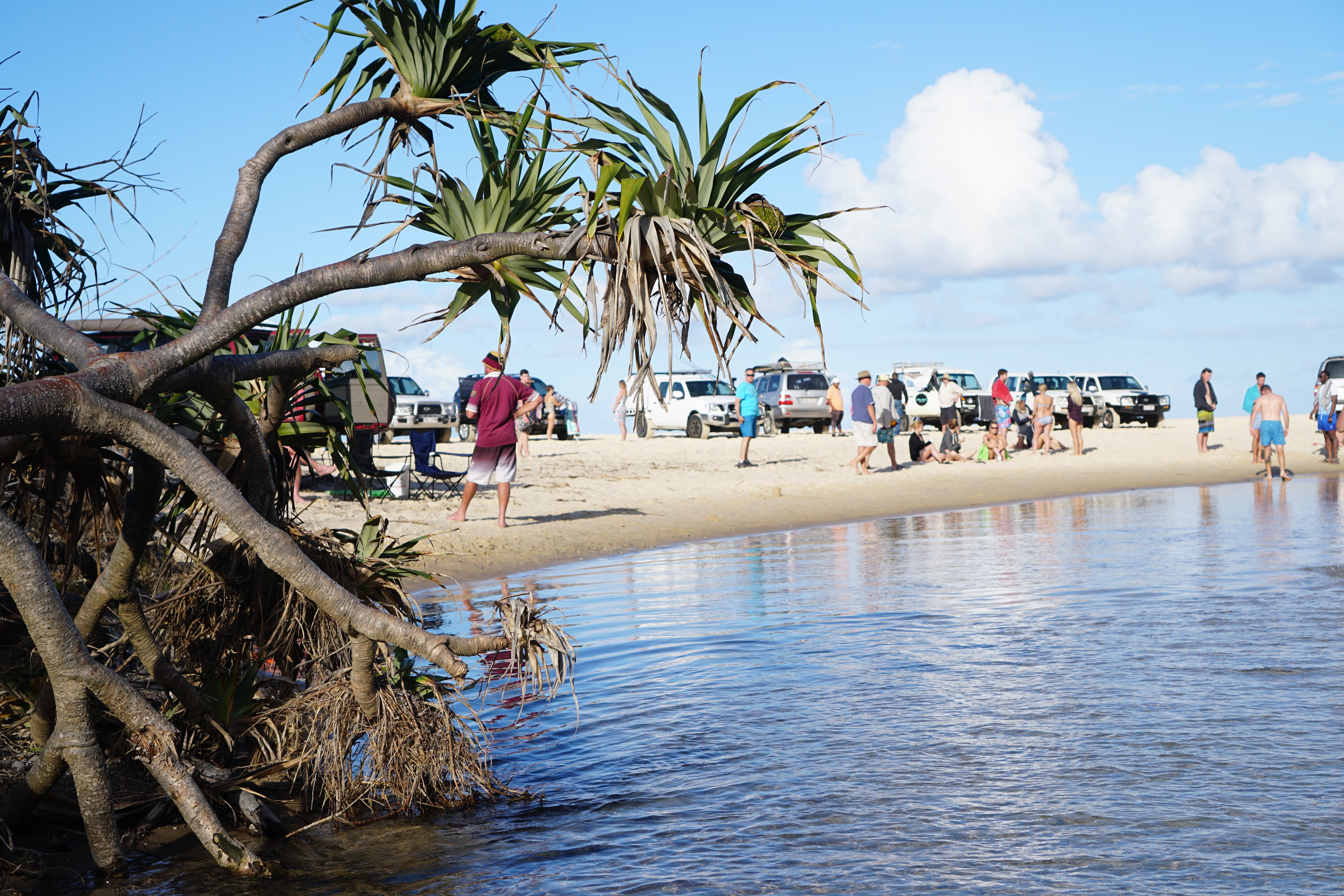
A GREAT SPOT TO STOP AND REST.
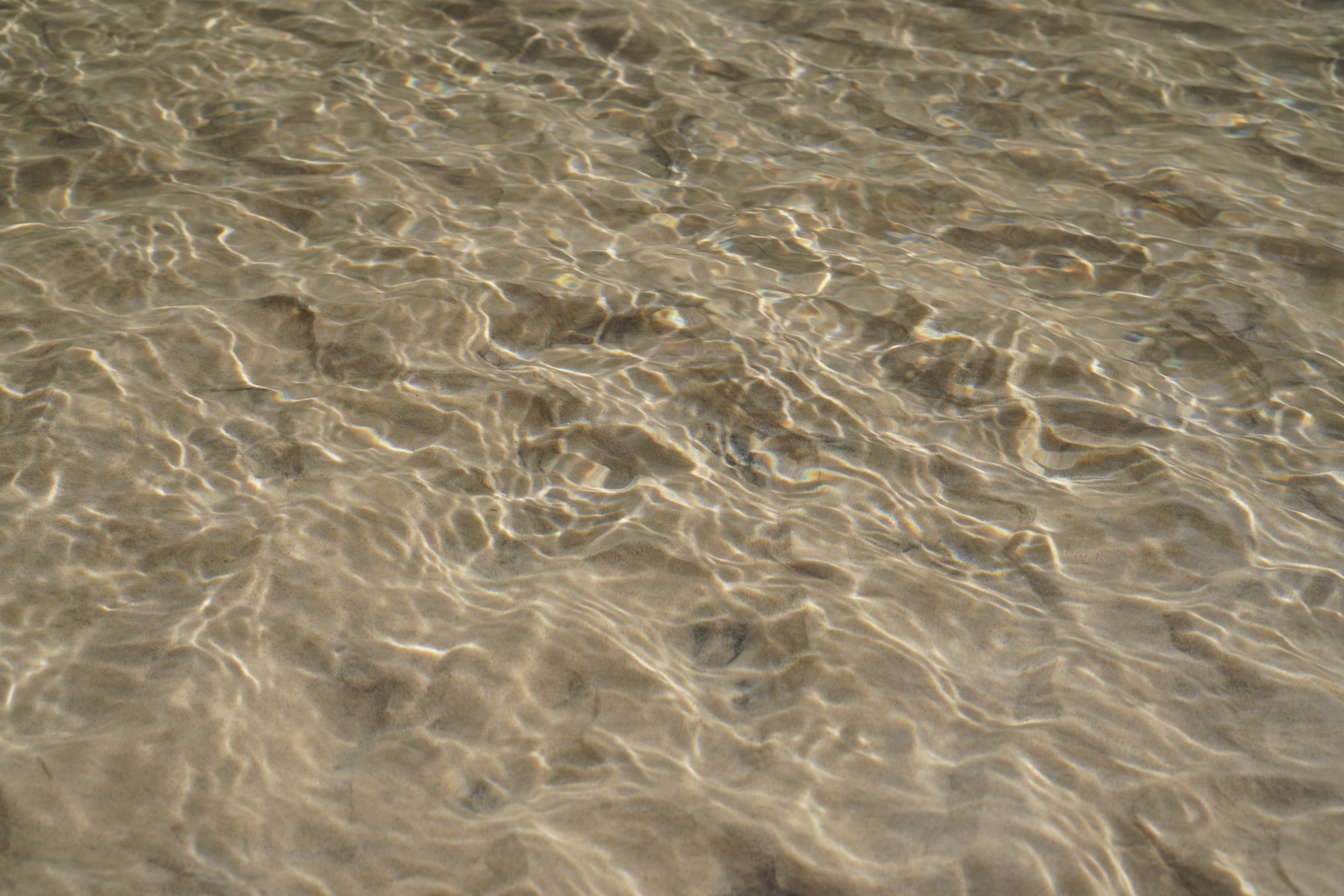
THE CRYSTAL CLEAR WATER OF ELI CREEK.
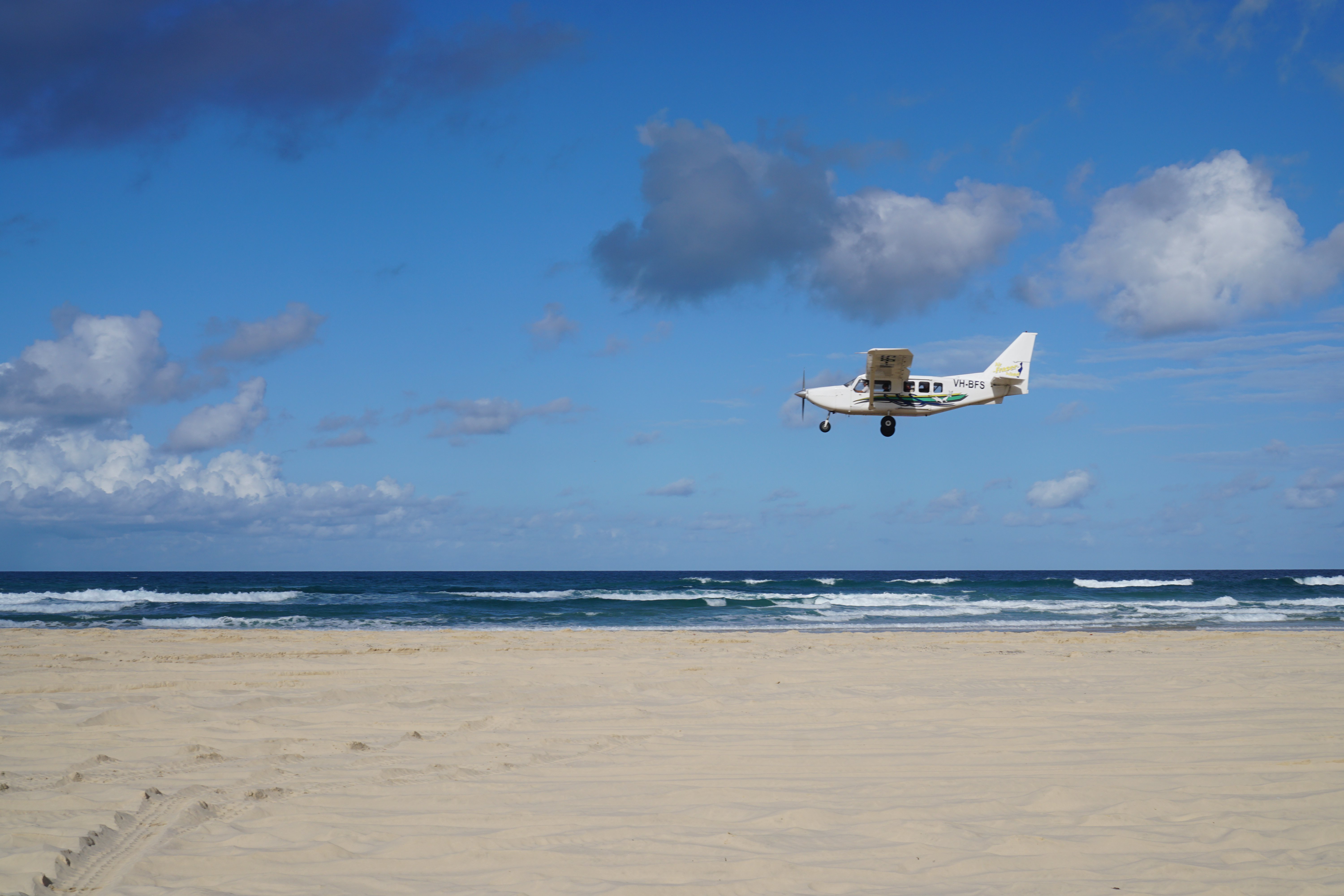
THE BEACH MAKES A GOOD RUNWAY.
Eli Creek is the largest creek on the eastern beach of Fraser Island. It pours up to 4 million litres of crystal-clear, fresh water into the ocean every hour. It is a very popular picnic and swimming spot. Many people choose to stop here on their journey up the beach for a cool dip or a drink. A quick drive through the creek is also useful for giving the underside of your 4wd a bath to remove mud, sand and grime. Planes also land and take-off from the beach in front of Eli Creek.
BEACH DRIVING:
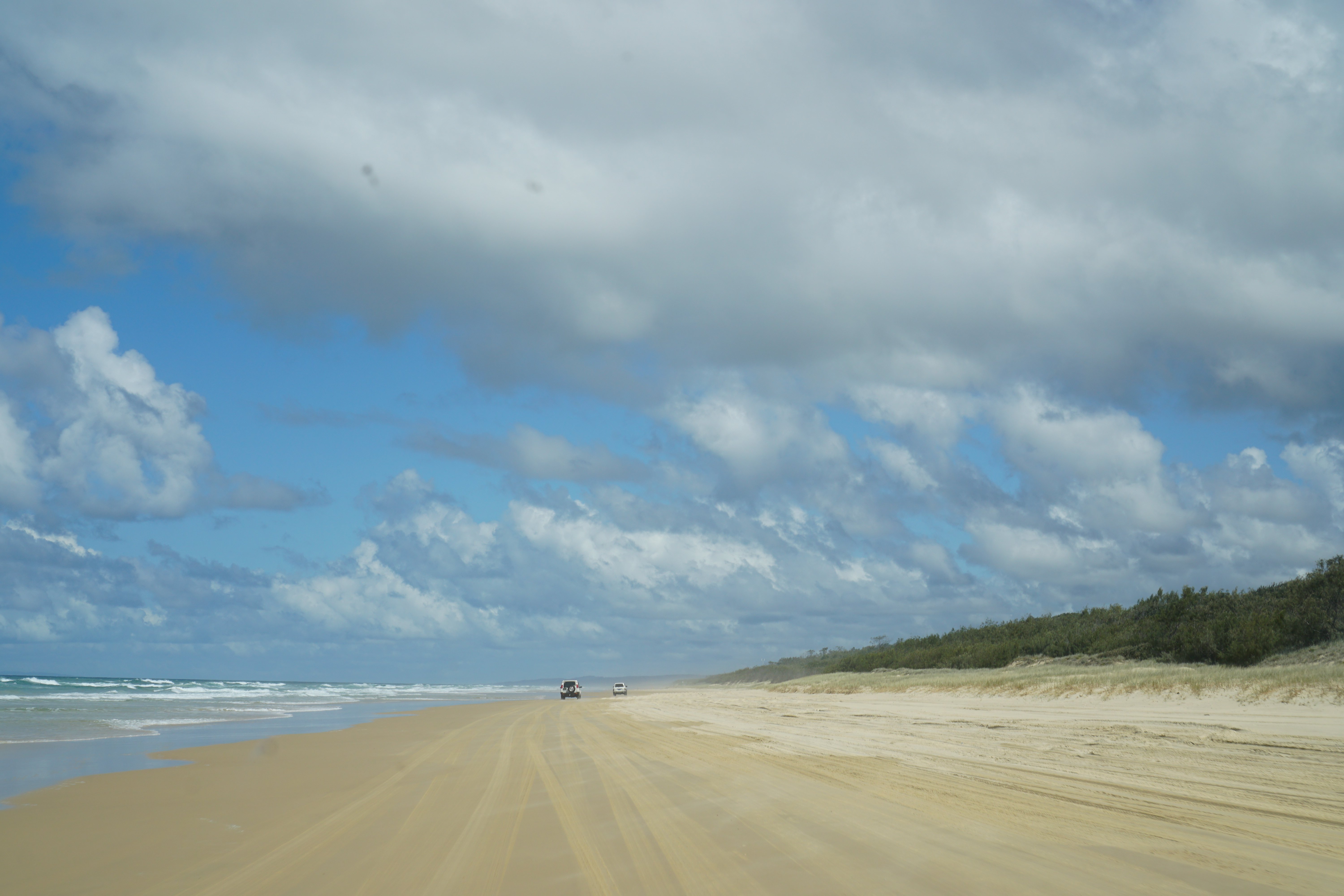
75 MILE BEACH IS OFTEN DESERTED.

BEACH DRIVING.
Fraser Island is the World's Largest Sand Island and does not have bitumen roads outside of Kingfisher Bay Resort. Most of the tracks on Fraser Island are soft sand and not suitable for conventional Two-wheel-drive vehicles. Four- wheel-drive vehicles with low ground clearance may also experience difficulty on some of the inland tracks and getting on and off the beach at certain access points.
75 Mile beach has many hazards for drivers including washouts, which are often difficult to see and occur after heavy rain and rough seas. Wave action exposes dangerous rocks. For beach driving a reduction in tyre pressure to 136kpa (18-21psi) is recommended.
You must also keep a lookout for aircraft taking off and landing on the beach. Low tide is the best time to travel on the beach. Avoid driving during the two hours either side of high tide, and often for longer, because some areas are more affected than others by tidal activity and onshore winds. For safety, it is best to avoid travelling at night. Speed limits apply and all vehicular tracks and the eastern beach are designated roads and normal road rules apply.
Overall, driving on the beach is a very unique and exciting experience. There are not many places in the world where you can experience this.
OUR FUN VIDEO OF 4WDing ON FRASER ISLAND:
Over the next few days I'll be publishing Days 2 & 3 of my trip, which includes trips to the spectatular freshwater lakes.
Click here to:

